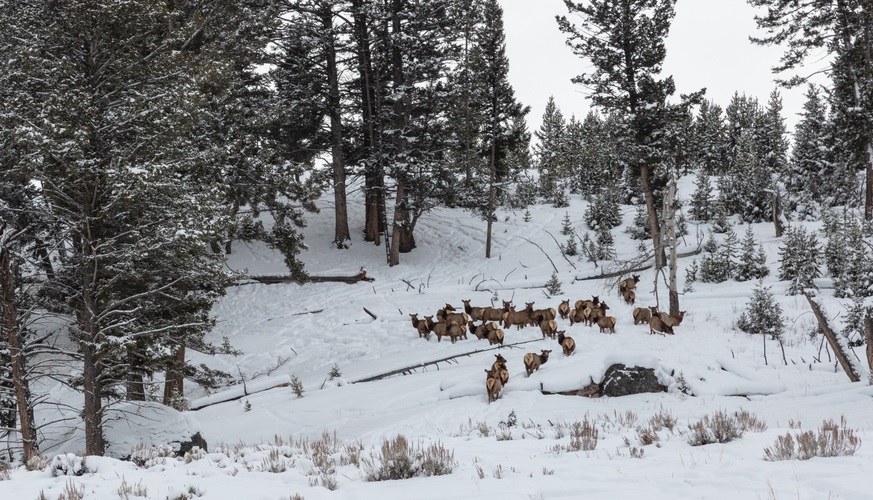The Rocky Mountain Elk Foundation formally objected to a U.S. Forest Service (USFS) decision that gives the green light for the construction of nearly 50 miles of new mountain biking trails through critical northwest Colorado elk habitat. RMEF supports opportunities to provide a diverse range of recreation opportunities on public lands with care for natural resources in mind. However, with this particular project, the USFS proposes a high-density trail system through critical elk habitat using outdated data and insufficient planning.
“The environmental assessment and draft decision fail to use the best available science,” said Karie Decker, RMEF director of wildlife and habitat. “Extensive research has demonstrated the impact that high-intensity recreation can have on wildlife. Elk are particularly sensitive to all forms of recreation, including biking and hiking – the primary uses identified in the project.”
The Mad Rabbit Trails Project, as it’s called, targets habitat used by the E-2 Bear’s Ear elk herd, Colorado’s second-largest herd found in the Hahns Peak/Bears Ears Ranger District on the Medicine Bow-Routt National Forests. That proposed action comes after the recently completed Buffalo Pass Trails project already added 43 miles of trails to the area.
A recent study by the USFS, Oregon State University and Oregon Department of Fish and Wildlife researchers showed elk are sensitive to human activities and avoid trail-based recreation.
RMEF also contributed grant funding for an ongoing Colorado Parks and Wildlife study dating back to 2019 to evaluate how human recreation may be influencing elk populations.
“Not only does elk distribution shift in response to continued disturbance, but in critical areas such as winter range or calving areas, disturbance can begin to impact herd population numbers and recruitment. In addition, elk avoidance of recreation trails can ultimately lead to large-scale population shifts in elk distribution, away from critical habitats on public land,” said Decker.
The Steamboat sub-herd, also found in the same area, already shows a decrease in both number of elk and calf:cow ratios.
RMEF also noted severe conditions from this past winter had a devastating impact on elk, mule deer, pronghorn antelope and other wildlife, leaving carcasses scattered for miles. Survival rates were the lowest ever documented by Colorado Parks and Wildlife (CPW). As a result, CPW reduced antlerless hunting in E-2 by 89 percent. The Mad Rabbit Trails Project overlaps with this area.
“The assessment must incorporate this data and evaluate how the new trails and increased use will exacerbate recent winter-related losses to the E-2 elk herd,” said Decker. “RMEF requests a decision of No Action so that a full Environmental Impact Statement can be prepared using the best available science.”
RMEF has a long conservation history in Colorado. Since 1987, RMEF and its partners completed 843 conservation and hunting heritage outreach projects there with a combined value of more than $201.8 million. These projects conserved or enhanced 501,957 acres of habitat and opened or improved public access to 119,587 acres.
Click HERE to take action and urge Colorado’s governor and congressional delegation to stop this project before it’s too late.
(Photo source: Rocky Mountain Elk Foundation)
